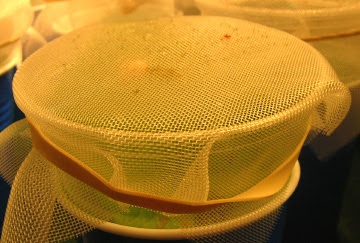Arizona So Far
I am into the second phase of the Arizona trip right now, and the word of the week is monsoon. The monsoon rains have been very strong this year. It’s a mixed blessing. On one hand the desert is beautifully lush at the moment. There’s lots to see- at least while the sun is out. But it’s been raining a lot.

On Friday night, Leon and I flew down from Chicago and met up with our friends Michael and David from Phoenix. For Phase 1 of the trip, we hung out together staying at a nice B&B in downtown Tucson. Saturday we drove up Mt. Lemmon in the rain. It was fun, but the views were nonexistent. We tried one brief hike and got caught in a sudden downpour for our efforts. Saturday night we enjoyed a Mexican meal and conversation with fellow blogger Homer. Meeting other bloggers is an aspect of blogging that is very new to me. Homer is every bit as witty and charming in person as he is on his blog. I’m glad that we met.


Sunday was beautiful. We attempted to drive up Kitt Peak, however Saturday’s rains caused a rockslide that closed the roads. So instead, the four of us went for a walk in Tucson Mountain Park. The desert is incredible after all of the rain that has been falling. I’ve never seen so many Mammilaria cacti in bloom together before. After the walk, we bid goodbye to our Phoenix friends. Leon and I then enjoyed a second walk in Tucson Mountain Park, hiking up to a small pass that overlooks part of the city. I then got Leon on a plane back to Chicago and hung out at the airport to await the start of Phase 2 of the trip with the arrival of my collecting buddy John.


L-R: Michael, Leon, Me, David
Monday, John and I went to French Joe Canyon, our favorite collecting spot in the Whetstone Mountains. Alas, it was cloudy there and little was out. So we departed early and headed to our main goal of the day: Wilcox Playa and tiger beetles.

abundant and diverse tiger beetles.
Wilcox Playa is a mostly dry lakebed that sits at the north end of Sulphur Springs Valley. I’m not sure why, but there are three tiger beetles- two subspecies and one full species- that are found there and nowhere else. There is also a tremendous species diversity overall there. We saw a total of eight species, including one of the endemics. Alas, no tiger beetle photos. It was so hot that they were very active and just too fast to photograph.


Today we attempted to climb into the Santa Rita Mountains at Madeira Canyon. There were clouds over the mountains when we set out. These got thicker and thicker as we approached. The rain started just after we got there. We moved down instead of up, moving away as the rain caught up with us. Bu lunchtime we left for another location, but the rain eventually found us there as well. We drove back to Tucson in a blinding thunderstorm. The up side? This afternoon, I’ve been able to update my blog. Tomorrow evening we begin phase three of the trip with the beginning of the conference.

Hippomelas planicosta
Labels: Arizona, Collecting, Travel




































